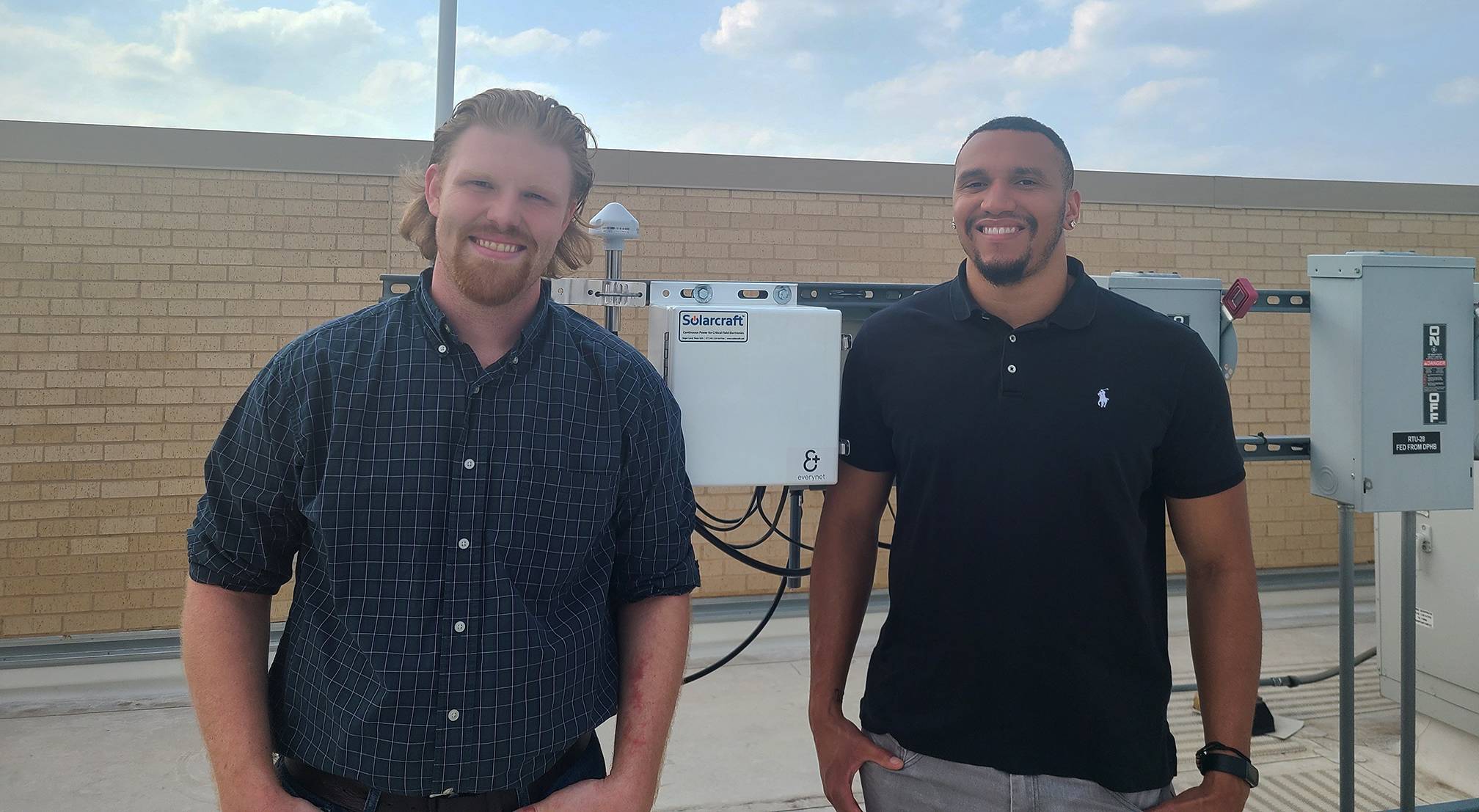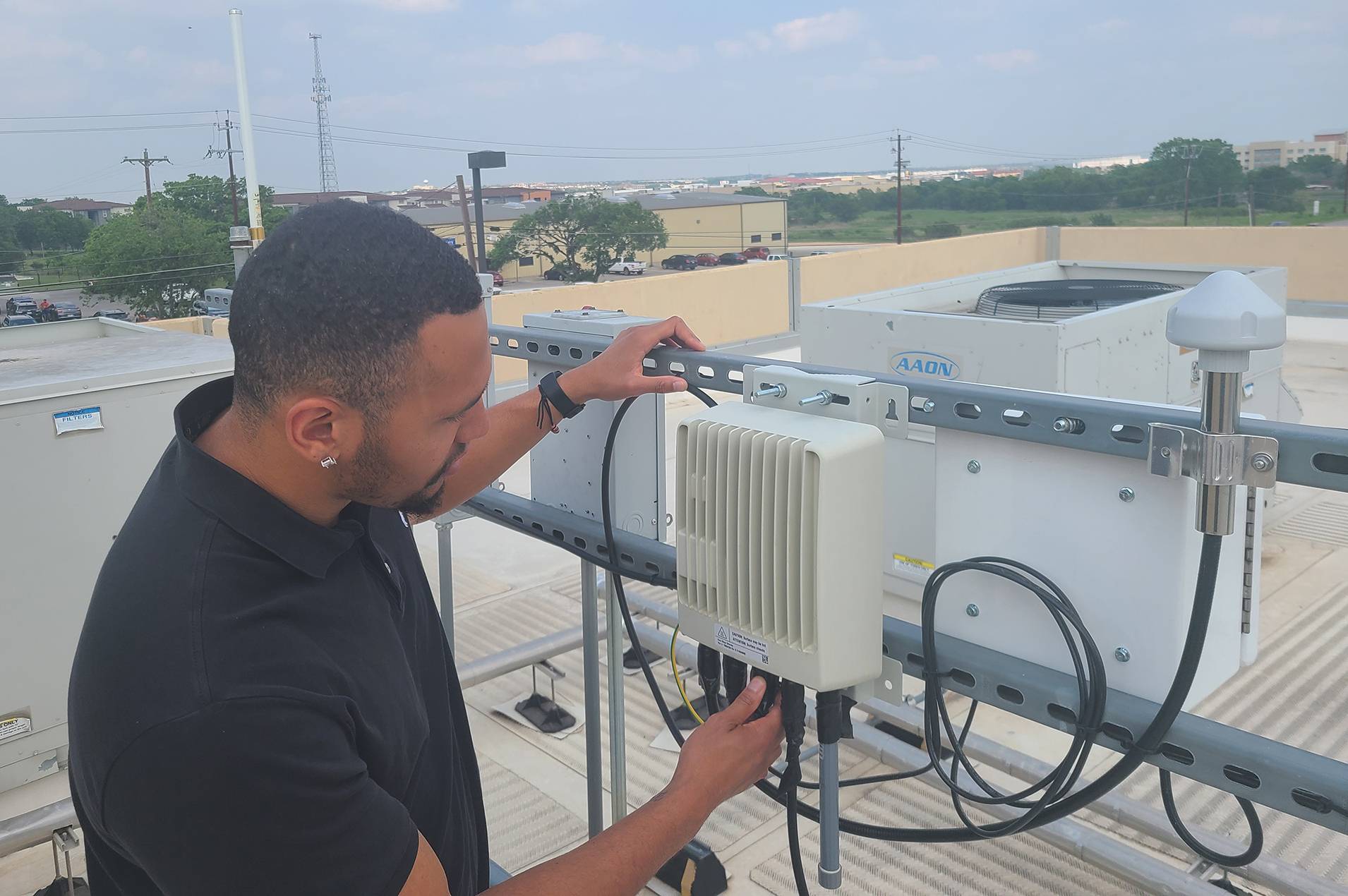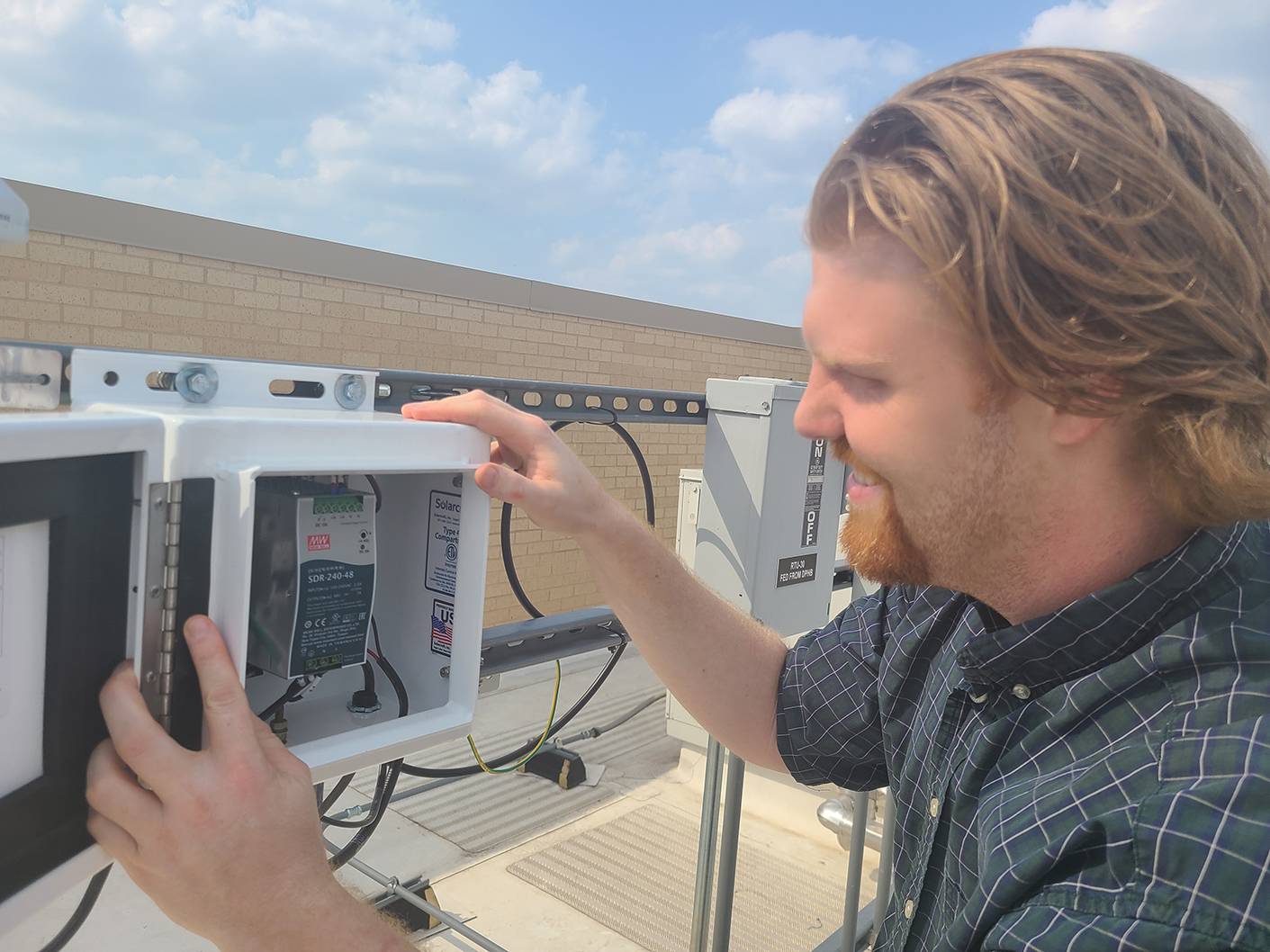Julie Cooper | May 16, 2022

Texas State University electrical engineering students Kevin Seets and Dupri Grimes are assisting with testing and research projects in the Smart Networks Lab located at the Science, Technology, and Advanced Research (STAR) Park. They represent just a few of those students who are getting hands-on experiences working with the Private LTE/5G network that was recently introduced at Project CIEDAR — the Connected Infrastructure for Education, Demonstration and Applied Research consortium.
Dupri Grimes is a graduate student who works full-time for SitePro, a Lubbock-based company, where he is primarily responsible for water management and working with oil and gas companies in addition to city governments. A native of Albuquerque, New Mexico, Grimes graduated from Trinity University in 2019 with a bachelor’s degree in engineering science.
Kevin Seets, from the Dallas/Fort Worth area, is a senior majoring in electrical engineering with a concentration in networks and communications. Following high school, Seets went work on industrial boilers. He attended community college before transferring to Texas State. He has a summer internship lined up with Dallas-based Oncor Electric.
Dr. Stan McClellan, professor of electrical and computer engineering, and Andres Carvallo, Materials Applications Research Center (MARC) fellow and professor of innovation, direct projects at CIEDAR. There are currently 100 faculty working on 291 projects with 250 students, in 32 laboratories and seven centers up and running.
Dr. McClellan explained just some of the things that students do at STAR Park, including: 5G interference testing, using equipment to measure spectral activity around STAR Park, gathering and correlating signal strength data, installing EveryNet and LoRaWan antennas at STAR Park, getting the system operational, and developing software and system evaluation techniques that both 5G and LoRaWan networks use.
Seets described two of the ongoing projects – LoRaWan (long range wide area networks) and their work with Anterix, the nation’s largest holder of licensed spectrum in the 900 MHz band, with the mission to “deliver the transformative broadband needed to modernize critical infrastructure.”
What are they doing with CIEDAR? “We are building nine smart living labs with the focus of digitalization, decentralization, and decarbonization,” said co-director Carvallo. The nine smart living labs in development concentrate on utilities, buildings, energy, water/wastewater, cities, mobility, networks, sensor, and data/software.”
Both Grimes and Seets said there are many practical applications for everyday use for what is being studied and researched. These include water and electrical meters, streetlights/cameras, smart buildings, sensors in roads and bridges, and electric cars.

“That's what these labs are about — to help the cities and the utilities (electric, water, and gas) really get ahead of the curve and learn how to manage resources, how to change their processes and create new best practices of how they go about running their businesses every day,” Carvallo said. “CIEDAR isn’t only helping cities and utilities with their technological wish lists – it is a multi-disciplinary research and development consortium.”
Grimes said that working with Dr. McClellan has helped him significantly. In an electronics class last semester, he designed some antenna. This year, that theory met application. “I needed an idea for my thesis, and I changed it to a project for my company,” he said. His graduate studies became a rich learning experience that will benefit his job with SitePro.
Both students agree they appreciate having professors who have worked in the tech industry before teaching at the university. “You can definitely tell the difference partnering with somebody who has practical understanding,” Seets said. In addition to STAR Park, Seets is an instructional assistant to Dr. Michael Casey, a senior lecturer in engineering.
Grimes agreed. “Whenever faculty show me a practical application, I think about how I can actually use that technology,” he said.

Both Grimes and Seets are set to graduate in the spring of 2023. They have helped to recruit other engineering students who want to work at STAR Park. “Just go talk to a professor,” Seets said. “If the professors see that you are putting in extra effort, they just want to help you that much more.” Two other graduate students — Bishal Thapa and Bishal Sharma — are also working in the Smart Networks Lab.
Grimes recently earned an Academic Achievement Award from the Coalition of Black Faculty and Staff at Texas State. “You learn about stuff here (at Ingram) — and you get to play with it and really dig in over there at the research lab,” he said.
“This whole experience has surprised me,” Seets said. “I feel like I have learned much from this experience (at STAR Park). You have to have a place to jump off from. But getting to see what’s coming down the pipeline — the future of our industry and what it is going to look like — it has been great.”
Share this article
For more information, contact University Communications:Jayme Blaschke, 512-245-2555 Sandy Pantlik, 512-245-2922 |
